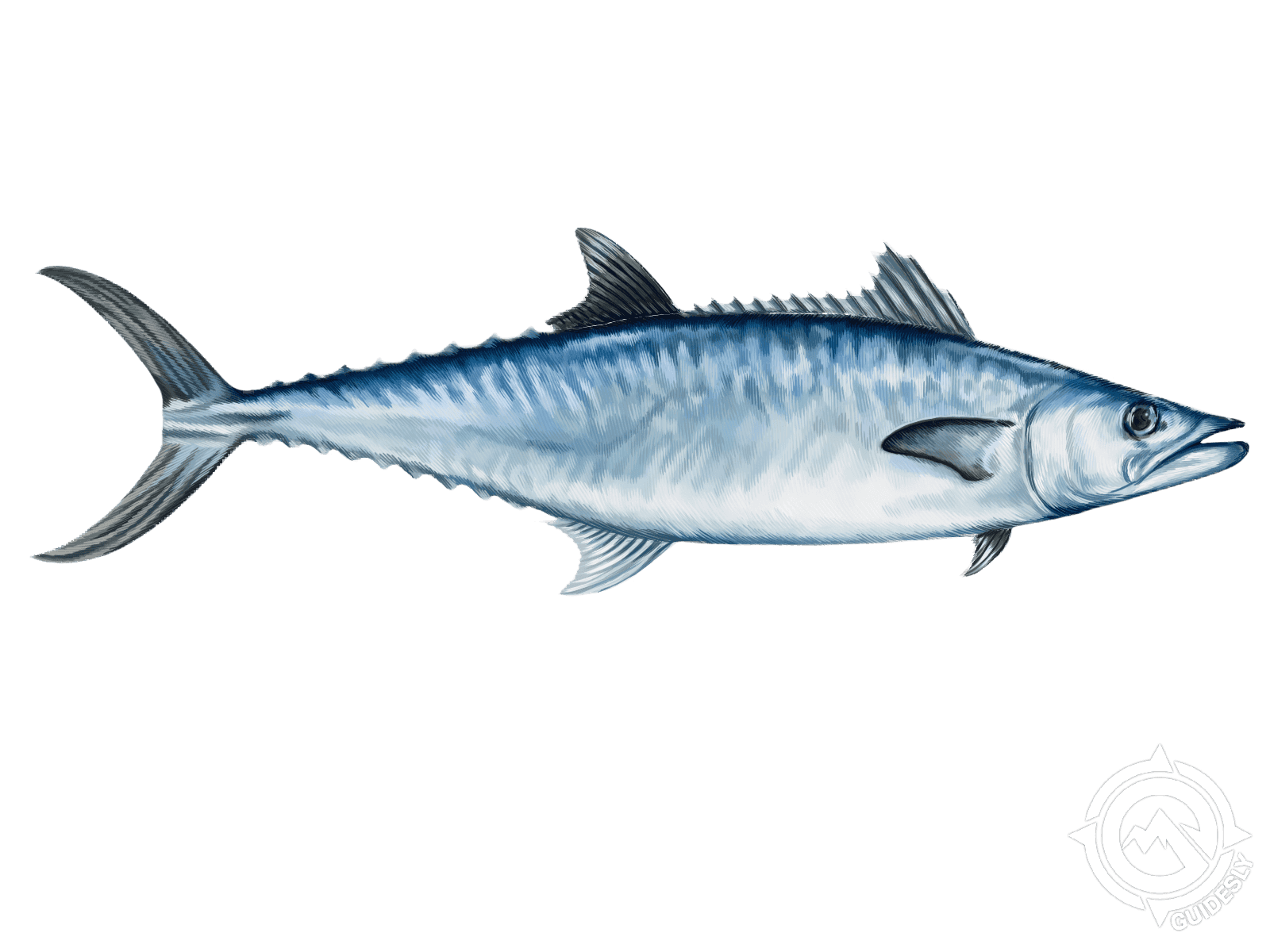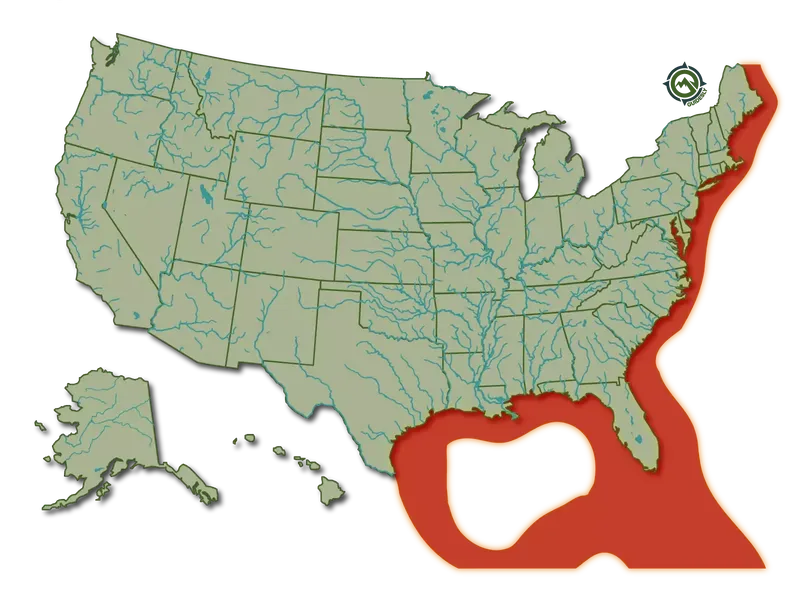King Mackerel

Species Details
Scomberomorus Cavalla
Scombridae
Perciformes
Onshore, Nearshore, Offshore, Reef, Wreck
10 - 20 lbs.
19" - 72"
King Mackerel (Scomberomorus cavalla) Fish Description
Also known as Spanish Mackerel or Kingfish, this migratory species belongs to the mackerel family specifically found in the Gulf of Mexico and the Atlantic Ocean.
What makes the King Mackerel striking are the small and vaguely visible, loosely attached scales on their entire body. Its dorsal fin is totally without color and usually folded back into a groove (same with the pelvic fins). Generally, King Mackerel are olive in color on the back parts, with a white underbelly, and rosy, iridescent sides. The smaller King Mackerel may have some brown to yellowish spots on the flanks, smaller than that of the Atlantic Mackerel. Interestingly, the teeth of King Mackerel are highly similar to that of the Bluefish.
King Mackerel Diet and Size
As an opportunistic carnivore with a voracious appetite, King Mackerel have several choices on their food menu. Depending on the season, they may feast on Blue Runner, Northern Mackerel, Striped Anchovy, Weakfish, Cutlassfish, Jack, Menhaden, and squid.
This fish is considered of medium size, typically weighing around 30 pounds; some King Mackerel caught weighed a little over 90 pounds. Females weigh more than males. For example, at 7 years old, a female King Mackerel can weigh 22 pounds, whereas the male is only half as heavy.
Interesting Facts About the King Mackerel
- The sperm and eggs of King Mackerel are spread into the sea; they are fertilized by chance.
- Fertilized eggs of King Mackerel hatch in less than a day!
- King Mackerel started being marketed fresh only in 2005. Their grayish flesh has a high fat content.
- Along with Tilefish, Shark, and Swordfish, King Mackerel should be avoided by children and pregnant women due to their high mercury content.
- The King Mackerel is often mistaken for the Atlantic Spanish Mackerel and Cero Mackerel. To distinguish them, know that the last two species’ lateral aliens slope gradually from the gill’s top edge to the tail, whereas the King Mackerel’s stops mid-body.
King Mackerel — Fishing Techniques
King Mackerel belong to the most sought-after gamefish in Texas to North Carolina. They are popular due to their speed which is matched only by the Wahoo, their distant relative.
The most common ways of capturing King Mackerel are by jigging, trolling, and using live or dead bait, spoons, and other artificial lures.
Commercial anglers use gear consisting of run-around gill nets. Recreational anglers typically troll using large planers, heavy tackle, and lures.
If you plan to use live bait, make sure to tie two hooks to a strong metal leader. The first hook (single/treble) must be attached to the live bait’s mouth and/or nose. The second hook (treble) must be put through the bait’s back or allowed to dangle. You must do these because King Mackerel are known to bite the rear section of a live bait.
King Mackerel Habitat and Distribution

As a subtropical fish, King Mackerel are found mainly in the Atlantic Coast along the US. They are highly abundant in Brazil, especially Rio de Janeiro, and are also found in North Carolina. This fish also inhabits the Gulf of Mexico, the Gulf of Maine, the Bay of Bengal, and the Indian Ocean and Arabian Sea.
King Mackerel are commonly found in depths ranging from 40 feet to 150 feet. The bigger King Mackerel are usually found inshore, particularly in harbors and inlets with waters as deep as 590 feet. They occur in waters with temperatures in the range of 68 to 84°F.





